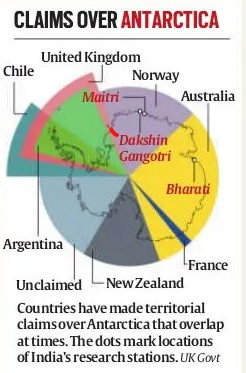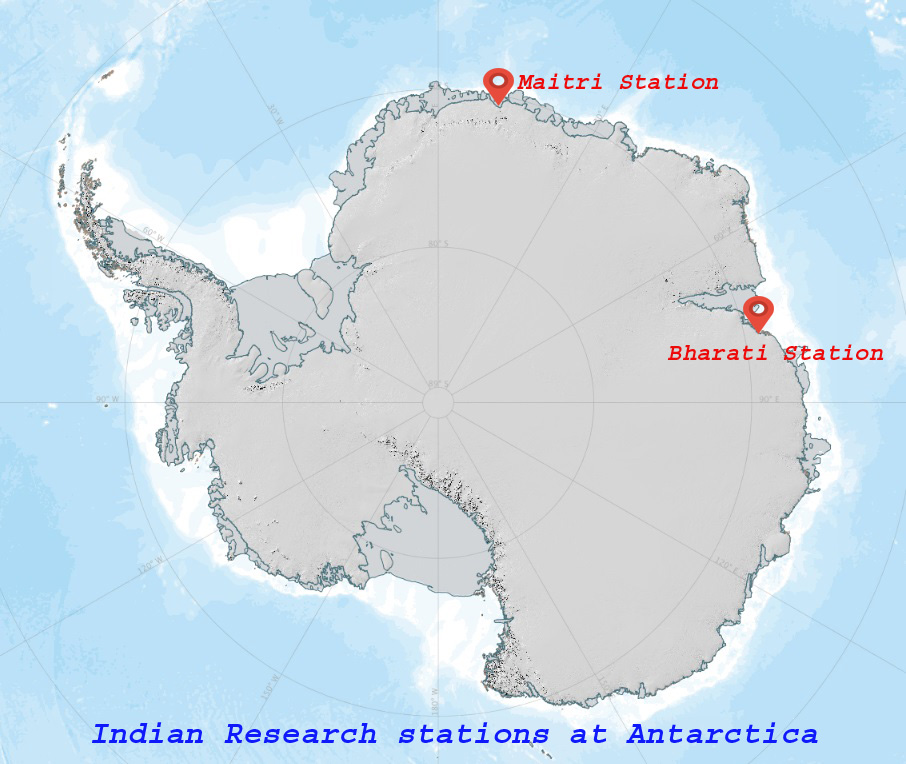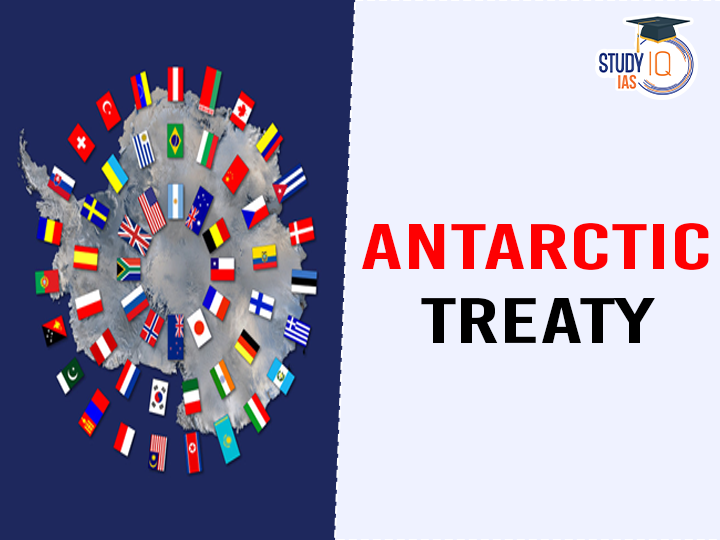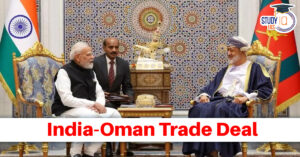Table of Contents
Context: The 46th Antarctic Treaty Consultative Meeting (ATCM-46) held in Kochi, Kerala, focused on the ongoing debate about regulating Antarctic tourism. Despite efforts to establish a regulatory framework, the meeting concluded without a definitive solution.
| Facts |
|
Overlapping Territorial Claims, Cold War: What Led to the Antarctic Treaty
Tussle over Antarctic Territory
- In the 1950s, seven countries (Argentina, Australia, Chile, France, New Zealand, Norway, and the UK) had made formal territorial claims over Antarctica.
- The U.S., the USSR, Belgium, Japan, and South Africa explored the continent but did not make any territorial claims.
- There were overlapping claims, particularly between Argentina, Chile, and the United Kingdom, leading to conflict.
- Between 1947 and 1955, Argentina and Chile rejected a British proposal to resolve their overlapping claims in the International Court of Justice.
- India requested the UN to include “the question of Antarctica” on the provisional agenda of the General Assembly in 1956, but the effort was unsuccessful due to opposition from Argentina and Chile and lack of support from the US and the USSR.
Antarctic Treaty amidst Cold War
- The International Geophysical Year (IGY) of 1957-58 was a breakthrough, where 12 nations agreed not to let their differences hinder scientific research in Antarctica.
- In 1958, the US invited IGY participants to Washington to negotiate a treaty to preserve the continent as an international laboratory for scientific research and ensure its peaceful use.
- The Washington Conference resulted in the signing of the Antarctic Treaty by all 12 members in 1959.
- The treaty came into force in 1961 and froze all territorial disputes in Antarctica.
- It prohibited new territorial claims, banned militarization and nuclear testing, and promoted scientific research.
A Success Story
- Currently, 56 countries are part of the Antarctic Treaty, with 29 of them (including the 12 original signatories) being Consultative Parties involved in decision-making.
- The treaty has been successful due to its balance between specificity and vagueness, promoting compromise over conflict.
- It has evolved to address new challenges through additional conventions and protocols on marine conservation, mining prohibition, and environmental protection.

Challenges Ahead
- Climate change, with record-breaking high temperatures and low ice coverage in Antarctica, poses the biggest challenge.
- A spike in tourism-related activities in and around the continent is also a concern.
India’s Role
- India joined the Antarctic Treaty in 1983 and is a Consultative Party.
- India wanted to ensure that the Cold War rivalry between the US and the USSR did not spill over to Antarctica.
- India has research stations in Antarctica (Maitri, Bharati, Dakshin Gangotri).
Historical Context of ATCM
- Tourism regulation has been debated at ATCM meetings since the 1960s.
- A proposed tourism annexe in 1991 failed to gain consensus, leading to reliance on IAATO’s self-regulation.
- Discussions intensified after a 2004 expert meeting on tourism, with concerns about environmental impacts, research disruption, and safety.
- However, the ATCM’s fragmented approach resulted in non-binding guidelines rather than comprehensive regulation.
- However, the ATCM’s fragmented approach resulted in non-binding guidelines rather than comprehensive regulation.
| Facts |
About The International Association of Antarctica Tour Operators (IAATO)
|
Concerns Associated With Antarctica Tourism
Environmental
- The increased human presence disrupts wildlife, damages fragile ecosystems, and risks introducing invasive species.
- Additionally, ship traffic pollutes pristine waters, and tourism contributes to the global carbon footprint.
- Climate change exacerbates these issues by opening new areas for tourism and increasing ecosystem vulnerability.
- Balancing scientific research, responsible tourism, and environmental protection is increasingly challenging.
Regulatory Framework Gaps
- The governance framework for Antarctic tourism is fragmented and lacks specific regulations.
- The Antarctic Treaty of 1961 prioritises peaceful use and scientific research, while the Madrid Protocol offers broad environmental guidelines but no specific tourism regulations.
- IAATO, a self-regulatory industry body, manages day-to-day tourism activities, but many argue its guidelines are insufficient to address growing environmental pressures.
Antarctic Treaty Consultative Meeting (ATCM) Under Antarctic Treaty
Antarctic Treaty Consultative Meeting (ATCM)
- Annual Convening: The ATCM serves as a forum for Antarctic Treaty Consultative Parties and other stakeholders to address environmental, scientific, and governance issues in Antarctica.
- Meeting Frequency: From 1961 to 1994, the ATCM met biennially, but since 1994, it has convened annually.
- Hosting Rotation: The ATCM is hosted by the Consultative Parties in alphabetical order of their English names.
Antarctic Treaty Secretariat (ATS)
- Formation: The ATS was established in 2004.
- Administrative Role: It serves as the administrative hub for the Antarctic Treaty System, coordinating ATCM and CEP meetings.
- Compliance Monitoring: The ATS monitors compliance with Antarctic Treaty provisions and agreements.
- Support Function: It provides assistance and guidance to Antarctic Treaty Parties on treaty implementation and enforcement matters.
| Committee for Environmental Protection (CEP) |
|
Key Highlights of 46th ATCM
- ATCM-46 is the primary platform for international cooperation on Antarctic issues.
- Despite recognizing the need for a comprehensive tourism regulatory framework, the meeting failed to reach a consensus.
- Unanimous agreement from all consultative parties is required for decisions, which often slows action and allows national interests to impede progress.
- While some countries advocate for strong regulations, others prioritise economic benefits or interpret Antarctic principles differently.
- The current geopolitical climate further complicates international cooperation.
Progress and Challenges
- Despite its limitations, ATCM-46 made some progress by focusing on developing a “comprehensive, flexible, and dynamic” framework for regulating tourism and non-governmental activities.
- A newly established working group will lead this effort over the next year, indicating a renewed commitment to addressing Antarctic tourism challenges.
- However, stronger measures are needed to mitigate tourism impacts, as the current governance frameworks, including the Antarctic Treaty System and the Madrid Protocol, offer broad guidelines but rely heavily on IAATO’s self-regulation.
India’s Position
- At ATCM-44 in 2022, India raised concerns about tourism’s impact on Antarctic research, conservation, and the environment, emphasising the importance of monitoring tourism impacts.
- Resolution 5 (2022) advised against building tourism-related structures with significant environmental impacts.
- Despite the lack of international consensus, India enacted its own Antarctic Act in 2022.
| India and Antarctica |

Research Stations:
Antarctica Act, 2022: The Act aims to protect the Antarctic environment and associated ecosystems and to give effect to the Antarctic Treaty, the Convention on the Conservation of Antarctic Marine Living Resources, and the Protocol on Environmental Protection to the Antarctic Treaty. |
Path Forward
- A sustainable future for Antarctic tourism requires a multi-pronged approach, including strengthening environmental protection, implementing robust monitoring programs, and fostering international cooperation.
- The efforts at ATCM-46 offer hope that by prioritising science-based decision-making and engaging all stakeholders, Antarctica can remain a pristine wilderness while recognizing the potential benefits of responsible tourism.


 Securities Markets Code Bill 2025: Towar...
Securities Markets Code Bill 2025: Towar...
 Weakly Interacting Massive Particles (WI...
Weakly Interacting Massive Particles (WI...
 India–Oman Trade Deal: CEPA Signed to ...
India–Oman Trade Deal: CEPA Signed to ...

























